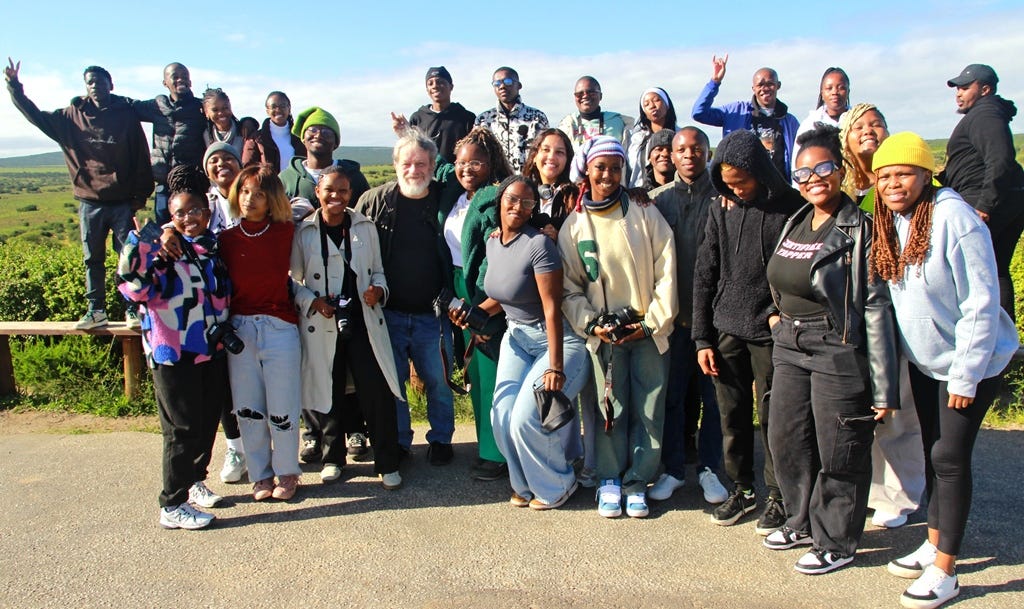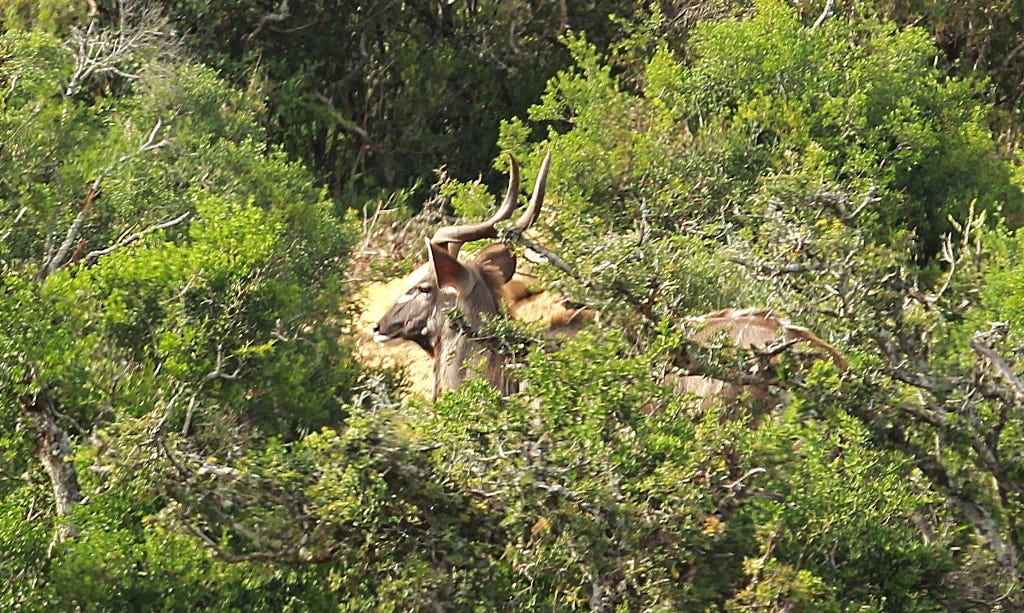
Let’s face it, we all hanker for a good lion sighting. There are many interesting animals to observe at the Addo Elephant Park (AEP), but few can compare with an exciting lion sighting. Social media groups often contain messages like, “my cousin from England is in the park today, and he would really like to see a lion” or simply “where are the lions today?”
You never read requests for information about bushpig or brown hyena sightings.
In recent years, lion sightings have been scarce. This is especially frustrating when we remember those heady days, 8-10 years ago, when there were 12 lions in the main section. You could spot the big cats at least every other visit to the park.
Park management appears to have decided that it was not a good idea to have so many big predators around as they were decimating the (very valuable) buffalo herd. Lions were shipped out to the Mountain Zebra Park, to Madikwe and at least one prized male was sent to Shamwari Private Game Reserve.
The Main Section of AEP was left with only five big cats: two males, Witwarm and Niklaas; and three lionesses, Josie, Dawn and Duffy. The last cubs in AEP were born sometime in March/April 2017 – eight years ago. The three male cubs known as Tom, Dick and Harry, were translocated to the Madikwe Game Reserve soon after they had turned two-years old. This means that for a full six years, the AEP main section had only five lions – down from 12 only a few years previously.
For several years, sightings were far and few between as the five got older and arguably more reluctant to show themselves. The two males and Josie at 14- and 17-years-old respectively have lived well beyond the usual lion-sell-by date while Josie’s twin daughters, Dawn and Duffy are also getting on at 11.
Fellow Addo Addicts have been making subtle suggestions on how to bolster the lion population for years. We believe that Dawn and Duffy might have been on some form of contraceptive but park management has not publicly confirmed nor denied this speculation.
Then earlier this year, guarded rumours started circulating about two new lionesses being translocated from the Kalahari to AEP. Social media gossip hinted that the newcomers were being kept in a boma (special enclosure) near Rooidam in order to acclimatise them to the new environment. The lionesses were also given some exposure to vehicles with people in them because the area where they originated has very few cars.
My enquiries about the new additions were all met with the usual SANParks “a press release will distributed at the right time”.
Eventually the right time came on 3rd March 2025 and two lionesses were released into the Addo main viewing area. The two-and-a-half year-old sisters were brought in from the !Khamab Kalahari Reserve. The SANParks media release said, “The lionesses are a valuable addition to the lion population in the Park, as they bring with them strong, healthy genes that will add to the genetic variety in the Park”.
The media release went on to say that both lionesses are wearing monitoring collars “. . . so that rangers and researchers can observe what habitats they use, their proximity to the males and other predators and which species they prey on”.
It added that the collars would help management regulate the lion population so that it is appropriate to the size of the park and their impact on prey species. This is part of a broader initiative “to mimic natural processes” of lion social behaviour and population growth
The new lionesses have already made a significant difference to the park viewing experience.
I fully expected them to be rather shy, given their place of origin. Still rather young, they would hide themselves off in some of the more inaccessible parts of the AEP and we would hardly ever, or perhaps never, see them.
Happily, I was very wrong.
Ever since the new lionesses have been released, the number of lion-sightings reported on social media appears to have increased substantially. The two have been spotted many times in the north of the park particularly around the Domkrag area (see map). This is interesting because there haven’t been regular sightings of lions in that area since Jill disappeared and her brother Jack was moved to Shamwari Private Lodge.

There doesn’t seem to be any consensus about names for the two lionesses, possibly because park management has discouraged the practice of naming lions. This has not stopped online proposals including Khama (some people spell it: Kama) and Kala, suggestions that I think are worthy.
Not only have Khama and Kala been visible, but they appear to have drawn the two males from the south of the park. Witwarm and Niklaas have abandoned their old flames, Dawn and Duffy, and they have enthusiastically taken up with the latest additions in the area around Nzipondo Loop (see map). It is not always clear which male is mating with which female, but there have been numerous sightings of lion couples cavorting in the area.
Lion sightings for journalism students
Last Saturday (May 3rd), I accompanied a group of 28 Rhodes University Journalism students on a visit to the AEP. For many of the students, it was their first time in a game reserve and the first time ever seeing ‘live’ wildlife.
I had previously taken a similar group of third-year students to the park in September last year.
In the week before the most recent trip, I gave a briefing to the students about the rules of the park and what they might realistically expect to see on their visit. One of the main objectives of the briefing was to manage expectations about what they might or might not see.
In 2024, I told the students that they had a 10% chance of seeing lions. We never saw a single one.
This year, even though I was aware that other visitors had enjoyed appreciably more lion-sightings, I retained the odds at 10% and said they probably wouldn’t see any lions especially because it was a cold day. Still trying to manage expectations.
I was wrong again.

Soon after we had entered the park at Main Camp, we drove our two minibuses onto the Nzipondo Loop and stopped briefly at the Domkrag Lookout site. A few minutes later, we were on the section of Nzipondo that bounds Gorah Loop - and there they were. An old male and a young female resting between bushes near the top of a hill.
The couple was quite far away - as the crow flies, about 80 metres. At that distance, photography was difficult even with my 70-200mm lens, but they were indisputably visible. It was incredibly exciting since it was the first time I had seen one of the new lionesses and I had not seen either of the two males for more than a year.
Visibility was good from our high minibuses, but bushes on the side of the road obstructed the view of visitors in lower cars. It must have been frustrating for them.
While we were watching, the lions were mostly sleeping. Addo Addicts call them ‘flatcats’. Occasionally, they moved a paw, flicked away some creepy-crawly or twitched an ear.
Then unexpectedly, a large male kudu dashed across the road about 50 metres ahead of us. He began bounding up the hill towards the pair resting in their afterglow. We could not believe it. Was he going to rush right into the pair of sleeping cats?
I wanted to warn him and shout out loud that he should not to go that way. Don’t worry, I didn’t. Of course, it is the ultimate experience at a game reserve to watch a kill, but I did not want that magnificent antelope to die. He continued up the hill, dodging bushes but still holding the same course.
Suddenly, the kudu stopped. It is hard to estimate distance when the action is so far away, but I believe he was less than ten metres away from the lions. He was frozen staring directly at the couple. They looked at him incredulously.
It seemed like an eternity, but was probably only a few seconds before the kudu plunged toward his escape route, ran a few metres and then paused to look back to see if he was being pursued. He wasn’t, the lioness quickly stood up and peered around the bush. The male lazily arose and rubbed his head against the love of his life.
This was an incredible experience for people who had been in a national park for less than two hours.
The next edition of Real Safari Newsletter will feature a second, exciting lion sighting for the Rhodes students.
Thank-you for reading and be sure not to miss Josie, Dawn and Duffy up close and posing for the cameras.








How fantastic. What an amazing sighting!